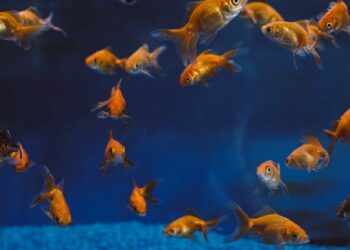Discover what vegetables bearded dragons can eat, with a complete, safe, and balanced feeding guide for a healthy pet.
If you’ve ever stood in your kitchen, leafy greens in one hand and a slightly judgmental bearded dragon staring from its terrarium, you know the dilemma, what’s actually safe for them to eat? Online lists often contradict each other. Some swear spinach is a superfood; others say it’s a reptile villain. You might even feel like you’re making more decisions for your bearded dragon’s diet than for your own.
This guide exists to clear that fog, once and for all. No fluff, no vague “just feed them veggies” advice. We’re diving deep into what vegetables bearded dragons can eat, why certain ones belong in their weekly rotation, and which should be left for the compost bin.
What You'll Discover:
Understanding a Bearded Dragon’s Dietary Blueprint
A bearded dragon isn’t just a “mini dinosaur” that eats random plants and bugs. Their digestive systems are tuned for a specific balance of nutrients, and knowing that balance is the first step to feeding them right.
Adult bearded dragons thrive on a mix of around 20–30% protein (usually insects) and 70–80% plant matter. Juveniles need more protein, but vegetables still play a critical role in building a strong, disease-resistant body.
The Role Vegetables Play in Their Diet
Vegetables are not just fillers, they’re a source of:
- Calcium to prevent metabolic bone disease (a common issue in poorly fed dragons).
- Fiber for healthy digestion.
- Hydration through water-rich greens.
- Micronutrients like vitamin A, C, and K that boost immunity and organ health.
Skipping vegetables or feeding the wrong ones can lead to malnutrition, digestive issues, or even toxicity.
The Core Rule: Not All Vegetables Are Equal
When you think “vegetable,” you might lump spinach, carrots, and broccoli together. But to your bearded dragon’s gut, these foods are wildly different. Some are daily staples, others are weekly treats, and a few are dangerous enough to cause long-term harm after repeated feeding.
We’ll split this into staples, occasional vegetables, and avoid-at-all-costs.
Staple Vegetables for Bearded Dragons
These are safe, nutrient-rich, and can make up a large portion of your dragon’s plant intake.
Collard Greens
High in calcium, low in oxalates, and packed with vitamins A, C, and K. Collard greens are a calcium powerhouse, meaning they directly help prevent metabolic bone disease.
Feeding tip: Wash well, chop into bite-sized pieces, and rotate with other greens to avoid boredom.
Mustard Greens
Slight peppery taste, high in fiber, and another calcium-rich option. They add variety without compromising nutrition.
Feeding tip: Mix with milder greens to balance the flavor if your dragon is picky.
Dandelion Greens
Not just a weed, these leaves are loaded with minerals and have an impressive calcium-to-phosphorus ratio.
Feeding tip: Pick from pesticide-free areas or buy organic. Rinse thoroughly to remove dirt.
Turnip Greens
Excellent calcium content, good vitamin A source, and less bitter than some other leafy greens.
Feeding tip: Alternate with mustard greens for a rotation that covers all micronutrients.
Endive and Escarole
Milder taste, still nutrient-rich, and gentle on the digestive system.
Feeding tip: Perfect for younger dragons just getting used to vegetables.
Occasional Vegetables (Once or Twice a Week)
These are healthy but should be limited due to oxalates, goitrogens, or other compounds that can build up if overfed.
Kale
Nutrient-dense but contains moderate oxalates that can bind calcium. Fine in moderation, especially if rotated with low-oxalate greens.
Spinach
Packed with iron and vitamins, but its high oxalate content can prevent calcium absorption. Feed rarely, and only alongside high-calcium foods.
Broccoli
Rich in vitamin C and fiber, but its goitrogens can interfere with thyroid function if given too often.
Carrots
Great vitamin A source but can cause vitamin A toxicity if overfed, especially if paired with supplements.
Bell Peppers
Colorful, hydrating, and vitamin-rich, but low in calcium, so they’re better as an occasional treat.
Vegetables to Avoid Entirely
Some vegetables aren’t just “less healthy”, they can actively harm your bearded dragon.
Rhubarb
Contains oxalic acid at toxic levels. Even small amounts can be deadly.
Lettuce (Iceberg)
Mostly water, almost no nutrients, and can cause diarrhea.
Avocado
Contains persin, a toxin for reptiles, and is high in fat.
Onions and Garlic
Toxic compounds that can damage red blood cells and lead to anemia.
The Calcium–Phosphorus Ratio: The Silent Diet Killer
One of the most overlooked parts of a bearded dragon’s diet is the calcium-to-phosphorus ratio. Ideally, it should be 2:1 in favor of calcium. Too much phosphorus binds with calcium, making it useless to the body and leading to bone weakness.
Staple greens like collard, mustard, and dandelion naturally fit this ratio, while occasional vegetables often tip the balance the wrong way.
Feeding Technique: More Than Just Chopping Vegetables
A healthy meal for your bearded dragon isn’t just “throw some greens in the tank.”
Chop to Match Head Size
Pieces should be smaller than the space between their eyes to avoid choking.
Mix Textures
A mix of soft greens with crunchier vegetables keeps them engaged and encourages eating.
Serve Fresh
Wilted greens lose nutrients quickly. Serve immediately after chopping.
Hydration Through Vegetables
Bearded dragons get much of their water from food. Vegetables like bell peppers, squash, and cucumber (fed sparingly) help keep them hydrated, especially in dry environments.
Seasonal Rotation for Maximum Nutrition
In the wild, bearded dragons eat seasonally. You can mimic that at home by rotating vegetables:
- Spring/Summer: Fresh dandelion greens, squash, bell peppers.
- Fall/Winter: Collard greens, turnip greens, carrots.
Signs You’re Feeding the Wrong Vegetables
Watch for these red flags:
- Soft, rubbery jaw (sign of calcium deficiency).
- Lethargy after eating (possible toxicity or imbalance).
- Refusal to eat greens (may be due to bitterness or unfamiliar texture).
Sample Weekly Vegetable Plan
Monday: Collard greens + bell pepper Tuesday: Mustard greens + carrot shreds Wednesday: Dandelion greens + squash Thursday: Endive + kale Friday: Collard greens + broccoli florets (small amount) Saturday: Turnip greens + cucumber slices (rare treat) Sunday: Mustard greens + carrot shreds
Key Takings
- Staple greens like collard, mustard, turnip, and dandelion should form the bulk of your dragon’s vegetable intake.
- Occasional vegetables like kale, carrots, and broccoli add variety but should be limited.
- Avoid toxic vegetables like rhubarb, avocado, and onions completely.
- Always aim for a calcium-to-phosphorus ratio of 2:1 to prevent bone disease.
- Rotate vegetables seasonally for maximum nutrition and enrichment.
- Chop vegetables small, mix textures, and serve fresh to encourage eating.
- Watch for signs of nutrient imbalance or toxicity and adjust the diet accordingly.





